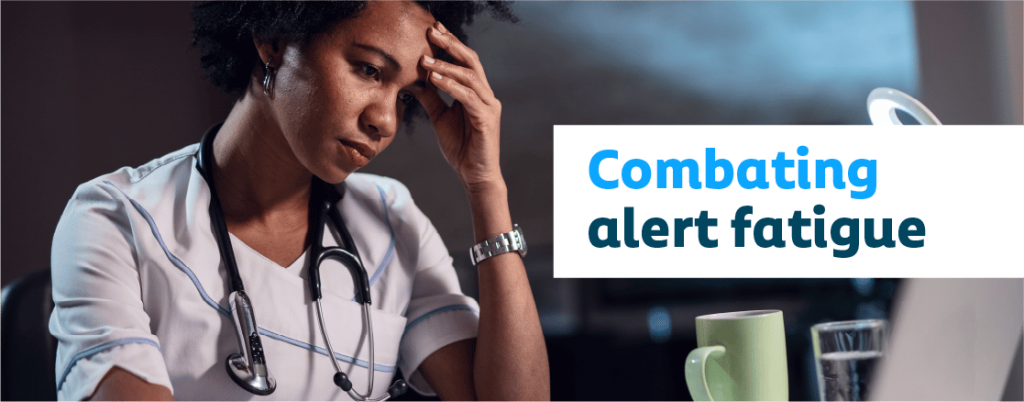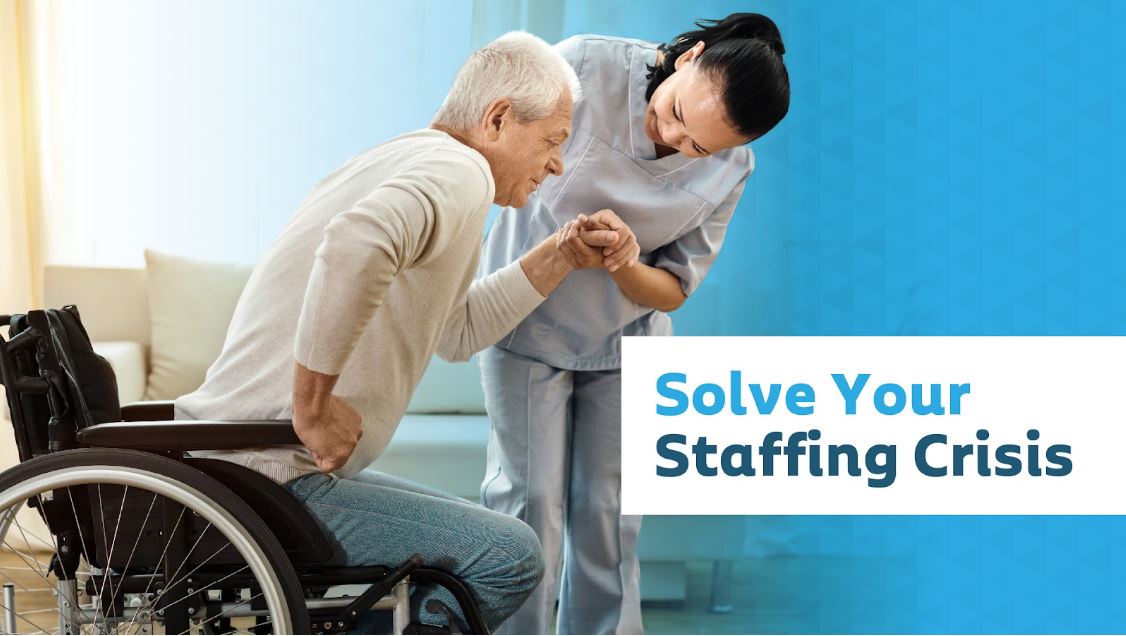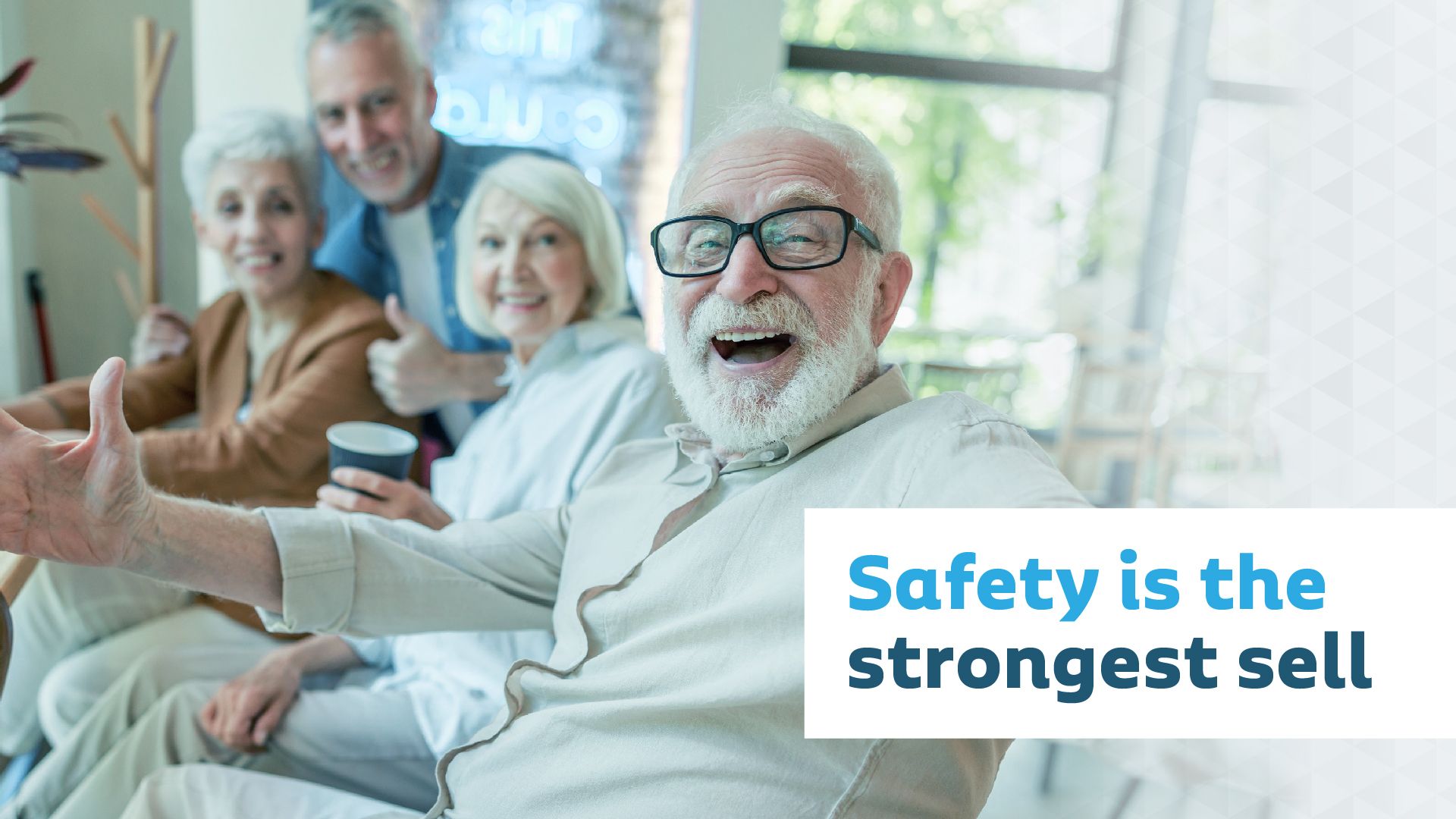Main Menu
Posted by Vayyar
April 29, 2021Fight Alert Fatigue: Ensure Resident Safety

Fall alert devices have been essential elements of senior care for decades. But while buttons, cords, and pendants – and more recently, wearables – undoubtedly save lives, they also have a significant and under-discussed downside: resident misuse that results in alert fatigue.
Many seniors in assisted living communities, nursing homes and memory care facilities often activate their alert devices to summon caregivers for help with simple tasks such as operating a TV remote or fetching a glass of water. It’s a phenomenon with serious consequences, not only for the resident but also for the entire community.
The resident who cried wolf
An NCBI study on alerting device effectiveness in long-term care facilities indicates that “alert fatigue” is a major issue for caregivers, second only to the perception that such devices are “ineffective as standalone intervention.”
While there’s scant hard data on the prevalence of alert misuse in senior care settings, assisted living and nursing home operators anecdotally report that around 80% of callouts turn out to be false alarms, caused by either technical malfunction or, more commonly, inappropriate use.
The outcome is obvious. Even the best-intentioned caregivers may become slower to respond to alerts, especially when the resident in question has a history of alert misuse.
Alarm fatigue commonly results in:
- Residents waiting longer for emergency assistance.
- More hospitalizations.
- Higher negligence claim costs.
- A greater risk of regulatory fines.
- Damage to communities’ brands.
- Lower occupancy.
With the sector facing a staffing crisis exacerbated by the pandemic, frequent callouts can also tire out overstretched caregivers, especially when they turn out to be false alarms, making employees question the usefulness of their systems. Facilities are in critical need of alarm fatigue solutions.
Touchless technologies
Elderly care operators know they need to reduce both the severity and frequency of falls, to prevent the catastrophic impact of long lies and to identify the unreported “hidden” falls that happen disturbingly often and can lead to more serious events.
A rapidly growing number of communities and their partners are therefore embracing touchless solutions that operate in tandem with legacy fall alert devices, providing additional visibility into a resident’s status.
After a fall alert device has been triggered, such solutions can confirm the event, ensuring that caregivers know it’s a genuine emergency. These solutions can also detect falls in situations where residents are unable to operate their devices, preventing long lies. Alert fatigue can be prevented by touchless technologies since caregivers are provided with more accurate data and there are fewer false alarms.
But these solutions have varying capabilities and limitations, which technology providers and senior care operators need to carefully consider.
Cameras
RGB (red, green, blue) cameras provide high-resolution data that can be used for Computer Vision-based fall detection. But they are limited in terms of field of view and struggle in varied lighting and areas of shadow. They’re also invasive of privacy, a critical concern for many seniors.
Infrared
Passive infrared (PIR) sensors detect motion by identifying changes to an image. They are cheap, compact, and highly energy-efficient, but heat sources and air flows often cause interference, severely impacting sensitivity. These sensors can also struggle to detect a “gradual fall,” when a resident tries to support themselves by holding on to a wall or piece of furniture.
RF sensing
Radio frequency imaging is currently the leading technology for real-time fall detection, providing high-resolution data across a wide field of view to passively monitor residents and identify sudden – or gradual – changes in their height profile. This enables instant, accurate detection of all falls, from sudden, serious incidents to hidden falls. Crucially, it also maintains privacy at all times.
Rich data for risk assessment
RF sensing also provides rich data on residents’ activity, such as room presence, bed exits and bathroom visits. Nurse Call System providers can leverage this information to provide their customers with comprehensive behavioral profiles that identify at-risk residents and enable fall prevention programs, providing another level of insight that completes the overall picture.
Staying alert
As senior care technology suppliers and their customers grapple with a complex set of existing and emerging challenges, radio frequency imaging represents a multilayered solution that mitigates alert fatigue, enhances resident safety, and maintains profitability.
Vayyar Care is the world’s most advanced elderly care solution, providing instant fall detection that enables caregivers to provide rapid response, as well as a wealth of activity data that supports the creation of personalized fall prevention and resident wellness plans.
To learn more about how Vayyar Care gives NCS providers and integrators tools to combat alert fatigue, click here.
The Post URL was successfully copied to your clipboard
Read more on #elderly care

08 October 2024
Recruit, reinforce, and retain should be the mantra of any hiring manager.…
Read more
05 August 2024
We’re living longer, not healthier. Over 95% of people aged 65 or…
Read more
17 June 2024
Senior living occupancy has recovered from the perfect storm it weathered in…
Read more
12 May 2024
Artificial Intelligence is on the verge of revolutionizing fall prevention in elderly…
Read more


